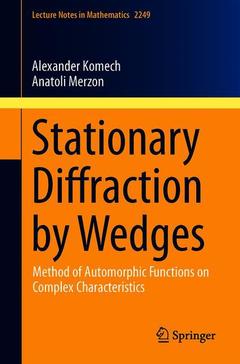Description
Stationary Diffraction by Wedges , 1st ed. 2019
Method of Automorphic Functions on Complex Characteristics
Lecture Notes in Mathematics Series, Vol. 2249
Authors: Komech Alexander, Merzon Anatoli
Language: English
Keywords
Automorphic Functions; Boundary Value Problem; Complex Fourier Transform; Diffraction; Distributions; Elliptic Equation; Factorization; Fredholm Operators; Helmholtz Equation; Holomorphic Functions; Paley-Wiener Theorem; Pseudo-differential Operators; Riemann Surface; Riemann-Hilbert Problem; Wedge; partial differential equations
Approximative price 47.46 €
In Print (Delivery period: 15 days).
Add to cartSupport: Print on demand
Description
/li>Contents
/li>Comment
/li>
This book presents a new and original method for the solution of boundary value problems in angles for second-order elliptic equations with constant coefficients and arbitrary boundary operators. This method turns out to be applicable to many different areas of mathematical physics, in particular to diffraction problems in angles and to the study of trapped modes on a sloping beach.
Giving the reader the opportunity to master the techniques of the modern theory of diffraction, the book introduces methods of distributions, complex Fourier transforms, pseudo-differential operators, Riemann surfaces, automorphic functions, and the Riemann?Hilbert problem.
The book will be useful for students, postgraduates and specialists interested in the application of modern mathematics to wave propagation and diffraction problems.
Gives a brief, accessible, modern review of the history of the development of the mathematical theory of diffraction
Covers techniques applicable to a wide range of problems
Provides a detailed and well-illustrated explanation of an original method, missing in the present literature




